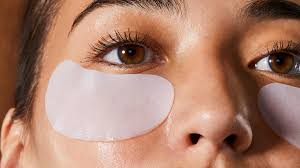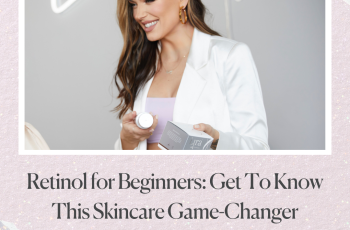
The Eyes: A Window into Your Health and Skin Care Needs
It is often said that the eyes are the window to the soul—but they can also be a surprisingly revealing indicator of your overall health, well-being, and self-care routine.
A single glance at your eyes can betray a sleepless night, excessive alcohol consumption, or even a lifetime filled with laughter.
This is because the area surrounding the eyes is unique in terms of its anatomy and sensitivity, making it especially prone to showing signs of internal and external stressors.
One of the most notable characteristics of the skin around the eyes is that it is the thinnest on the entire face—up to 10 times thinner than the skin on other parts of your body.
This delicate quality makes it more susceptible to a wide variety of issues, including dryness, irritation, and the early onset of aging signs such as fine lines and wrinkles.
Additionally, environmental factors such as UV exposure, pollution, and even seasonal changes can easily impact this fragile area, accelerating the visible effects of aging.
According to a 2015 study published in the journal Advanced Biomedical Research, this vulnerability is primarily due to the lack of oil glands and reduced collagen density in the periorbital area—the skin surrounding the eyes.
Collagen is a critical protein responsible for skin elasticity and firmness.
Without a sufficient supply of collagen and moisturizing oils, the under-eye region is more prone to sagging, dehydration, and the formation of creases.
Given these challenges, dermatologists and skincare professionals emphasize the importance of using targeted products specifically formulated for eye care.
These specialized treatments often come in the form of serums, creams, oils, and gel-based boosters.
Because the eye area is so delicate, it requires a more nuanced and gentle approach than other parts of the face.
Dr. Joshua Zeichner, a well-respected dermatologist and Director of Cosmetic and Clinical Research in Dermatology at Mount Sinai Hospital in New York City, emphasizes the importance of proper diagnosis when it comes to treating eye-related skin concerns.
“When treating skin problems around the eyes, it’s important to start by properly diagnosing the problem for the best treatment and results,” he advises.
Fortunately, the market offers a vast selection of eye care products, many of which are designed to address specific concerns such as puffiness, dark circles, and crow’s feet.
If you’ve never used eye creams or serums before, don’t worry—it’s never too late to begin an effective skincare routine.
With the right knowledge and expert tips, you can start taking better care of your eye area today.
Common Eye Area Concerns and How to Address Them
Let’s take a closer look at some of the most common eye-related skin issues, including dark circles, puffiness, and wrinkles, along with expert-backed solutions to treat them effectively.
1. Fine Lines and Crow’s Feet
Crow’s feet—those tiny, branching lines that appear at the outer corners of the eyes—are often the result of repeated muscle movements like smiling and squinting.
While they are a natural part of aging and a testament to a life filled with joy, they can become more prominent as collagen production declines over time.
If you’re looking to reduce the appearance of crow’s feet or fine lines under the eyes, incorporating retinoids into your skincare routine can make a significant difference.
Dr. Ranella Hirsch, a board-certified dermatologist based in Cambridge, Massachusetts, notes that retinoids help stimulate collagen production, which, in turn, smooths out the skin and softens wrinkles.
Prescription-strength retinoids, such as tretinoin (0.025% cream), are particularly effective.
However, they can be quite potent, so Dr. Hirsch advises applying them only to the area just outside the orbital bone.
To identify this area, gently press your finger around your eye socket—this is the boundary beyond which stronger treatments should not be applied to avoid irritation.
For those who prefer gentler alternatives or cannot tolerate prescription retinoids, over-the-counter eye creams containing retinol (a milder retinoid) are a great option.
Regardless of strength, it’s important to introduce retinoids gradually—start with one application per week and increase slowly to reduce the risk of dryness or irritation.
In addition to retinoids, peptide-based eye creams are also beneficial. Peptides are short chains of amino acids that can stimulate collagen production and support skin repair.
To maximize results, always follow up with a broad-spectrum sunscreen with an SPF of 50 or higher during the day, even if you’re indoors or it’s cloudy.
Protecting the eye area from UV damage is crucial in slowing down signs of aging.
2. Dark Circles
Dark circles under the eyes are a common concern that can make you look tired, even when you feel well-rested. While lack of sleep can certainly exacerbate the issue, it is rarely the primary cause. According to Dr. Zeichner, dark circles usually result from two main factors: hyperpigmentation and structural changes, such as the hollowing of the under-eye area due to aging.
To determine whether hyperpigmentation is the culprit, try this quick at-home test: Stand in front of a well-lit mirror and gently pinch the skin under your eye.
If the area remains dark while being stretched, the darkness is likely due to pigmentation. If the darkness appears to shift or fade, it may be due to shadows created by hollowed tear troughs.
For pigment-related dark circles, vitamin C is a superstar ingredient. It works by inhibiting melanin production in the skin, helping to lighten and brighten the under-eye area over time.
Look for eye creams that contain stabilized vitamin C in air-tight packaging such as pump bottles or tubes, which help preserve the potency of this sensitive ingredient.
Dr. Zeichner reminds users that vitamin C is a long-term commitment: “Think of vitamin C as exercise—you have to stick with it for several months to see results.”
In more severe cases, professional treatments such as laser therapy can target hyperpigmentation and offer more dramatic results.
For dark circles caused by structural hollowing, consider using eye creams enriched with hyaluronic acid. This powerful humectant helps draw water into the skin, temporarily plumping up sunken areas. In-office treatments such as dermal fillers can provide longer-lasting volume restoration if skincare products alone aren’t sufficient.
And a quick tip: Avoid rubbing your eyes, especially if you have a darker skin tone. Repeated friction can stimulate melanin production, further darkening the area over time.
3. Puffiness and Swelling
Occasional puffiness—often due to crying, alcohol consumption, or a salty meal—is a common but temporary concern.
Chronic puffiness, however, may be related to allergies, fluid retention, or even aging.
If seasonal allergies are to blame, daily antihistamines taken in advance of allergy flare-ups can help reduce inflammation.
Dr. Hirsch recommends starting them at least two weeks before peak allergy season for maximum effectiveness.
She also suggests using hypoallergenic pillowcases, which can help reduce exposure to common allergens such as dust mites.
For immediate relief from puffy eyes, consider using eye creams that contain caffeine.
Caffeine is a vasoconstrictor, meaning it can reduce swelling by narrowing blood vessels and aiding fluid drainage.
Additionally, you can use cooling eye masks or apply chilled compresses for a soothing effect. Elevating your head while sleeping can also prevent fluid from accumulating under the eyes.
For long-term results, a retinol-based eye cream may help firm the skin and reduce puffiness.
However, if puffiness persists and resembles a small, fat-like pad under the eye, it may be due to the displacement of fat pads—a condition that skincare alone cannot fix.
In such cases, dermatological procedures such as injectable fillers or lower eyelid surgery (blepharoplasty) may be recommended for a more permanent solution.
Final Thoughts: Prevention and Daily Habits Matter
Taking care of the skin around your eyes isn’t just about the right creams or serums—it’s also about adopting good habits.
Stay hydrated, wear sunglasses outdoors to protect from UV rays, avoid rubbing your eyes, and get adequate sleep.
These small lifestyle choices can significantly influence the appearance of your eyes and help preserve their youthful look over time.
In conclusion, while the skin around your eyes may be delicate and prone to aging, it is also highly responsive to proper care.
Whether you’re concerned about wrinkles, puffiness, or dark circles, there are effective solutions available to help you look refreshed, rested, and radiant.
With consistency and the right approach, your eyes can continue to be a bright window into your health and happiness for years to come.


